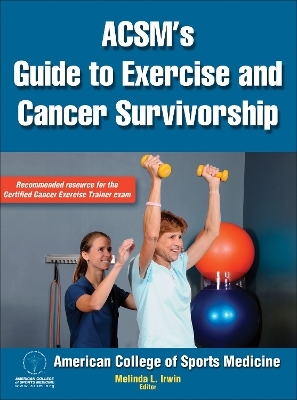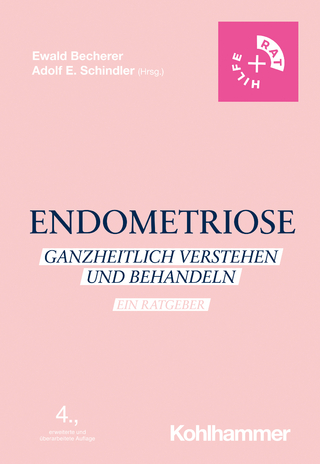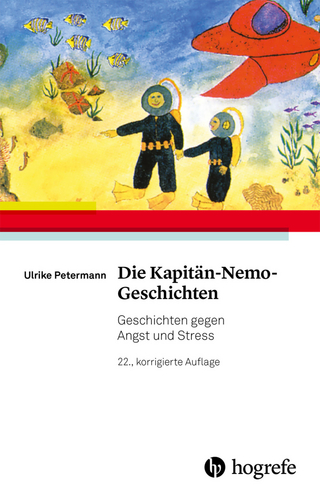
ACSM's Guide to Exercise and Cancer Survivorship
Human Kinetics (Verlag)
978-0-7360-9564-8 (ISBN)
ACSM’s Guide to Exercise and Cancer Survivorship presents the science behind the benefits of exercise for cancer survival and survivorship as well as the application of that science to the design or adaptation of exercise programs for cancer patients and survivors. Developed by the American College of Sports Medicine (ACSM), this authoritative reference offers the most current information for health and fitness professionals working with survivors of many types of cancers.
Dr. Melinda L. Irwin has assembled a team of the most respected experts in the field of exercise and cancer survivorship. With an emphasis on practical application, the text discusses the following:
• Incidence and prevalence of the most common cancers
• Common cancer treatments and side effects
• Benefits of exercise after a diagnosis of cancer
• Exercise testing, prescription, and programming
• Nutrition and weight management
• Counseling for health behavior change
• Injury prevention
• Program administration
This guide presents evidence-based information to assist health, fitness, and medical professionals in using exercise to help cancer survivors with recovery, rehabilitation, and reducing the risk of recurrence. Throughout the text, readers will find quick-reference Take-Home Messages that highlight key information and how it can be applied in practice. Chapters also include reproducible forms and questionnaires to facilitate the implementation of an exercise program with a new client or patient, such as physician’s permission forms, medical and cancer treatment history forms, weekly logs of exercise and energy levels, medication listings, and nutrition and goal-setting questionnaires.
In addition, ACSM’s Guide to Exercise and Cancer Survivorship discusses all of the job task analysis points tested in the ACSM/ACS Certified Cancer Exercise Trainer (CET) exam, making this the most complete resource available for health and fitness professionals studying to attain CET certification. Each chapter begins with a list of the CET exam points discussed in that chapter. A complete listing is also included in the appendix. As both an essential preparation text for certification and a practical reference, ACSM’s Guide to Exercise and Cancer Survivorship will increase health and fitness professionals’ knowledge of the benefits of exercise after a cancer diagnosis as well as the specifics of developing and adapting exercise programs to meet the unique needs of cancer survivors.
Evidence has shown that physical activity has numerous health benefits for cancer patients and survivors. More clinicians and oncologists are recommending exercise as a strategy for reducing the side effects of treatment, speeding recovery, and improving overall quality of life. In turn, cancer survivors are seeking health and fitness professionals with knowledge and experience to help them learn how to exercise safely within their capabilities. With ACSM’s Guide to Exercise and Cancer Survivorship, health and fitness professionals can provide safe exercise programs to help cancer survivors improve their health, take proactive steps toward preventing recurrences, and enhance their quality of life.
The American College of Sports Medicine (ACSM), founded in 1954, is the world’s largest sports medicine and exercise science organization with more than 45,000 national, regional, and international members and certified professionals in more than 90 countries. With professionals representing more than 70 occupations, ACSM offers a 360-degree view of sports medicine and exercise science. From academicians to students and from personal trainers to physicians, the association of sports medicine, exercise science, and health and fitness professionals is dedicated to helping people worldwide live longer, healthier lives through science, education, medicine, and policy. About the Editor Melinda L. Irwin, PhD, MPH, is an associate professor in the Yale School of Public Health and codirector of the cancer prevention and control research program at Yale Cancer Center. Dr. Irwin's research focuses on how exercise and weight influence cancer risk and survivorship. Dr. Irwin is the principal investigator of a number of research studies at Yale University and collaborates on various national projects and initiatives focused on exercise and cancer survivorship. She has received funding from the National Cancer Institute, American Cancer Society, Komen for the Cure, Lance Armstrong Foundation, and American Institute for Cancer Research and has published her research findings in top medical journals. Dr. Irwin also serves on various national advisory committees to develop consensus statements on physical activity, diet, weight control, and cancer prevention and control.
Chapter 1. Diagnosis and Treatment of Cancer
Larissa A. Korde, MD, MPH
Cancer Incidence and Survival
Cancer Biology
Cancer Staging
Cancer Screening and Diagnosis
Cancer Recurrence Warning Signs
Summary
References
Chapter 2. Side Effects and Persistent Effects of Cancer Surgery and Treatment
Tara Sanft, MD, and Melinda L. Irwin, PhD, MPH
Side Effects of Cancer Surgery and Treatment
Recurrence, New Primaries, and Second Cancers
Summary
References
Chapter 3. Lifestyle Factors Associated With Cancer Incidence, Recurrence, and Survival
Heather K. Neilson, MSc, and Christine M. Friedenreich, PhD
Effect of Body Weight
Effect of Exercise
Effect of Diet
Summary
References
Chapter 4. Benefits of Physical Activity After a Cancer Diagnosis
Kristin L. Campbell, BSc PT, PhD
Physiological Effects of Exercise Training
Psychological Benefits of Exercise Training
Cancer-Specific Exercise Issues by Body System
Effects of Cancer Medications or Treatments on Designing an Exercise Program
Summary
References
Chapter 5. Cardiorespiratory Fitness Testing in Clients Diagnosed With Cancer
Lee W. Jones, PhD, and Claudio Battaglini, PhD
Administration of Cardiorespiratory Fitness Testing
Exercise Testing Safety
Summary
References
Chapter 6. Exercise Prescription and Programming Adaptations: Based on Surgery, Treatment, and Side Effects
Kathryn Schmitz, PhD, MPH
Health Promotion and Risk of Disease Reduction
Exercise Prescription Alterations to Address Individual Needs
Benefits and Risks of Exercise and Exercise Training
Exercise Prescription Individualization
Acute and Chronic Adverse Effects of Treatment
Setting Goals
Sample Exercise Prescriptions
Summary
References
Chapter 7. Nutrition and Weight Management
Stephanie Martch, MS, RD, LD, and Wendy Demark-Wahnefried, PhD, RD
Diet in Cancer Prevention, Control, and Overall Health
Weight Status and Body Composition
Weight and Height Assessment
Energy Consumption and Cancer
Diet Composition and Nutrition Status
Complementary Alternative Medicine and Functional Foods
Dietary Supplements
Alcohol
Summary
References
Chapter 8. Health Behavior Change Counseling
Karen Basen-Engquist, PhD, MPH; Heidi Perkins, PhD; and Daniel C. Hughes, PhD
Effect of Cancer on Readiness to Exercise
Theory-Based Methods and Exercise
Translating Theory Into Practice
Summary
References
Chapter 9. Safety, Injury Prevention, and Emergency Procedures
Anna L. Schwartz, PhD, FNP, FAAN
Cancer-Specific Safety Considerations
Emergency Procedures
Documentation
Summary
References
Chapter 10. Program Administration
Carole M. Schneider, PhD
Designing a Cancer Rehabilitation Program
Cancer Rehabilitation Programs and Settings
Program Description and Operations
Policies and Procedures
Legal Issues and Documentation
Reimbursement Concerns
Community-Based Support
Summary
References
| Verlagsort | Champaign, IL |
|---|---|
| Sprache | englisch |
| Maße | 216 x 279 mm |
| Gewicht | 794 g |
| Themenwelt | Sachbuch/Ratgeber ► Gesundheit / Leben / Psychologie ► Krankheiten / Heilverfahren |
| Medizin / Pharmazie ► Medizinische Fachgebiete ► Onkologie | |
| Medizin / Pharmazie ► Medizinische Fachgebiete ► Sportmedizin | |
| ISBN-10 | 0-7360-9564-0 / 0736095640 |
| ISBN-13 | 978-0-7360-9564-8 / 9780736095648 |
| Zustand | Neuware |
| Haben Sie eine Frage zum Produkt? |
aus dem Bereich


